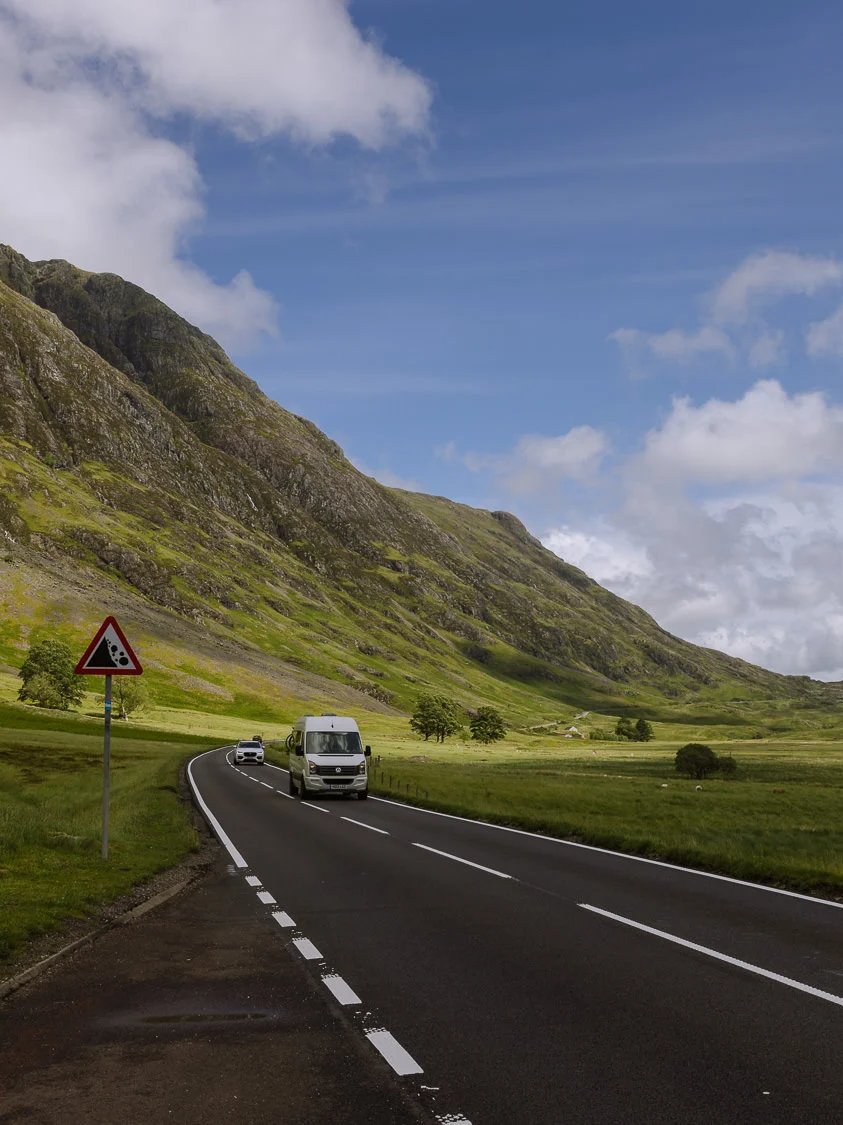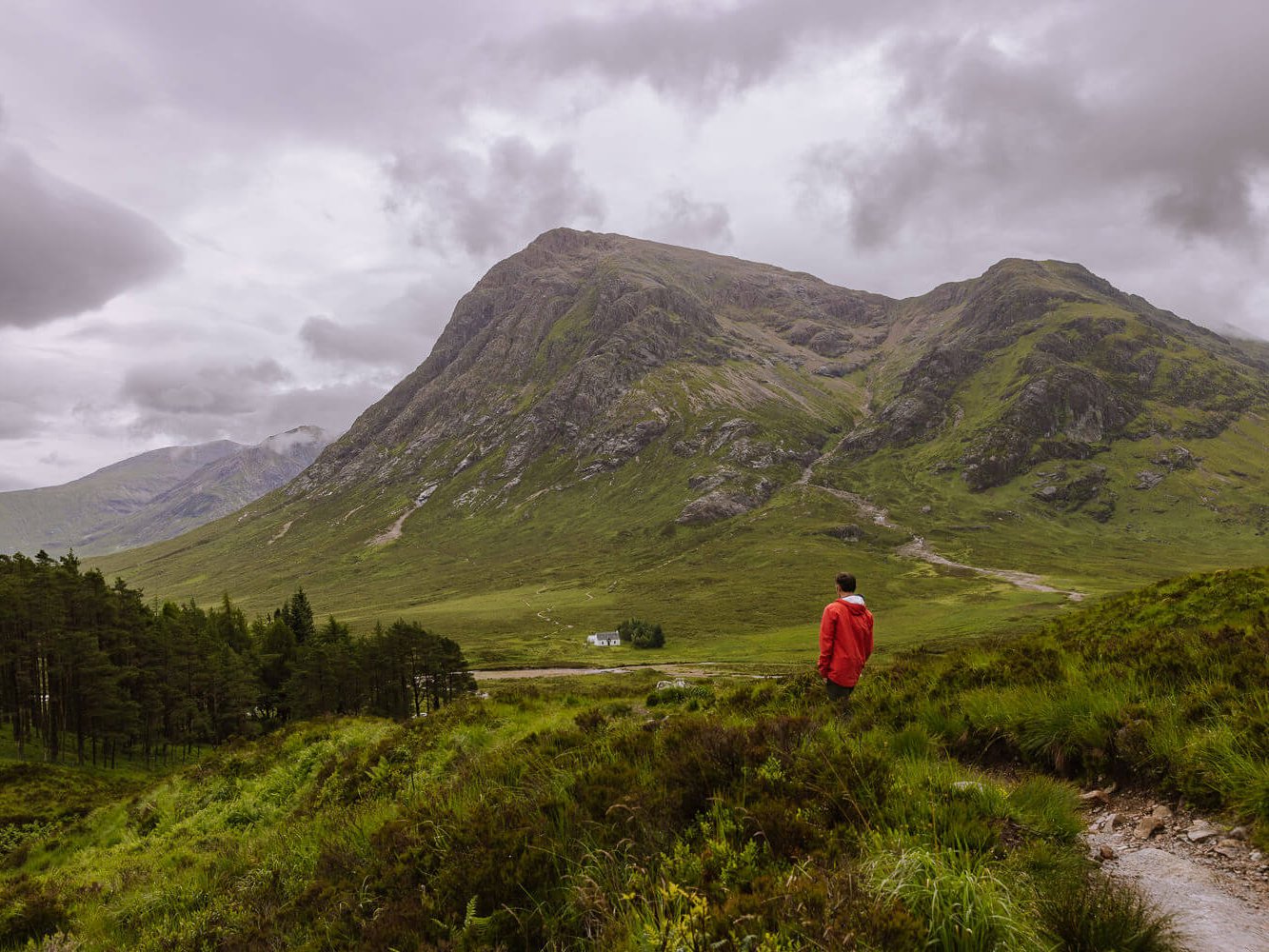Planning a trip to Scotland? As frequent explorers of the wild corners and historic cities, here are all our guides to Scotland.
SCOTLAND TRAVEL GUIDES
Scotland exceeds expectations. Yes, the scenery is spectacular with misty glens and craggy peaks but there’s also plenty to do.
From ancient castles to villages painted in cheerful colours; highland distilleries to pristine beaches Scotland is packed with history, adventure, great hiking an unique culture.
We’ve been to Scotland several times and even stumbled across a few sunny days. This page has all our guides to Scotland which focus on the Highlands region…for now.
For more of our UK guides, click on the boxes below to go to our other pages devoted to our Britain travel content.
BEST TIME TO VISIT
Scotland’s weather is famously unpredictable, so timing your visit is important.
Summer (June-August): Warmest weather and longest days with sunset as late as 10 PM in the north. Peak tourist season means crowds at major sites and higher prices. Edinburgh in August hosts the Festival Fringe but accommodation books out months in advance.
Spring (April-May): Increasing daylight, blooming landscapes, and fewer crowds make this one of the best times to visit Scotland. Weather remains changeable but generally improves through late spring. Midges haven’t yet emerged.
Autumn (September-October): Stunning colours on the Highlands, comfortable temperatures, and fewer visitors. September is particularly probably our pick of the months to visit Scotland. Midges decline after mid-September.
Winter (November-March): Short days and cold weather, but winter brings dramatic scenery, snow-capped mountains, and festive atmosphere in cities. Northern Lights possible in the far north. Many attractions have reduced hours.
Practical tip: Pack layers whatever season you visit. Scotland can experience four seasons in a single day, especially in the Highlands.
GETTING AROUND
By Car: Car is by far the most flexible way to explore, especially for the Highlands and islands. Roads are generally excellent, though single-track roads in remote areas require patience and etiquette. Drive on the left.
By Train: ScotRail connects major cities and offers some of Britain’s most scenic routes, including the West Highland Line to Fort William and Mallaig. The rail network is limited in the Highlands.
By Bus: Scottish Citylink and local operators connect most towns. Useful for city-to-city travel but less practical for exploring remote areas.
By Ferry: CalMac ferries serve the islands. Book vehicles in advance during summer. Western Isles, Orkney, and Shetland all require ferry journeys.
PRACTICAL INFORMATION
Currency: Pound Sterling (£). Scottish banks issue their own notes, which are legal tender throughout the UK despite what some shops might claim.
Language: English is universal. Scottish Gaelic is spoken in parts of the Highlands and islands, visible on road signs in these areas.
Midges: Tiny biting insects are Scotland’s least appealing feature from May to September, worst in damp, still conditions near water. Bring repellent and consider head nets for serious Highland hiking.
Tipping: 10-15% in restaurants if service isn’t included, round up taxi fares, £1-2 per bag for hotel porters.
Weather Preparation: Waterproof jacket and layers are essential year-round. Hiking boots for Highland exploration.
Wi-Fi: Widely available in cities and towns, spotty in remote areas. Consider a UK SIM card for data.
OUR SCOTLAND GUIDES
Currently, our guides are focused on the Highlands – our favourite part of the country to visit. As we go back and write more guides, we’ll keep this page updated.













